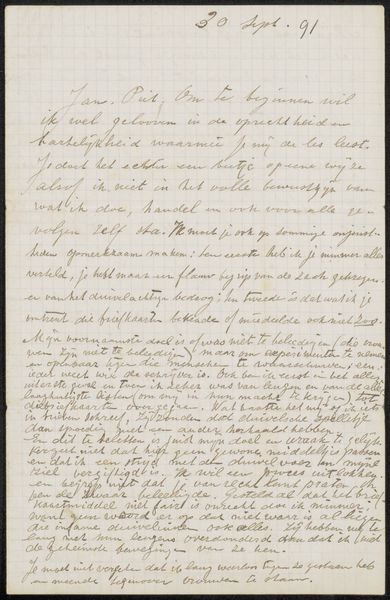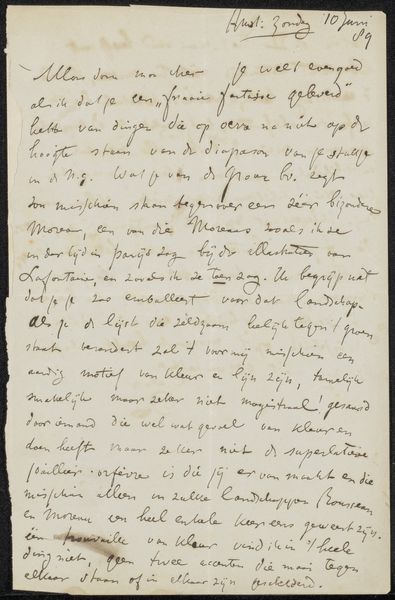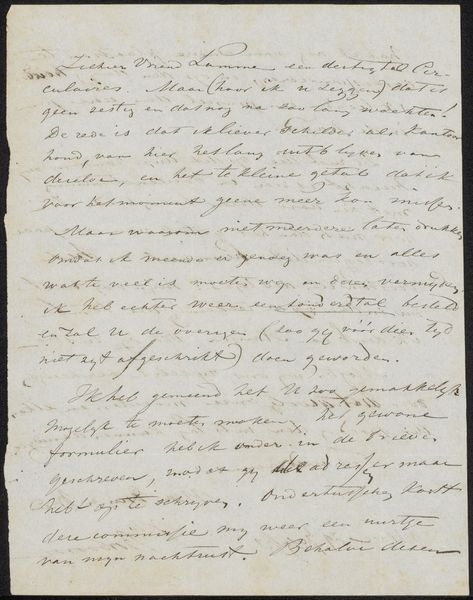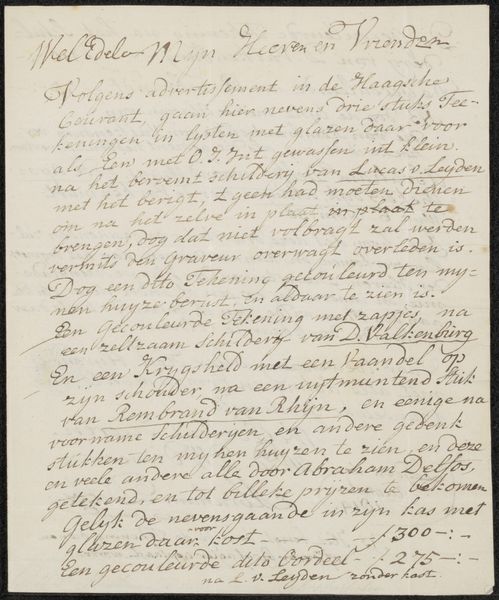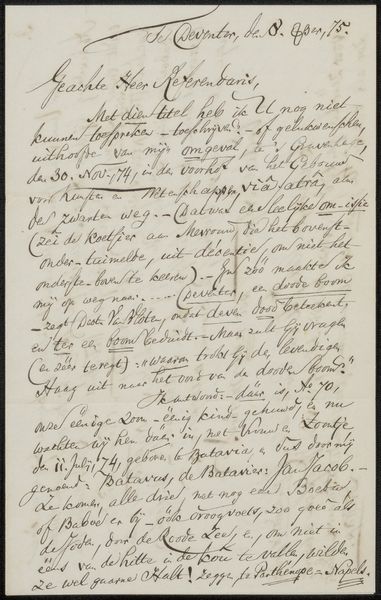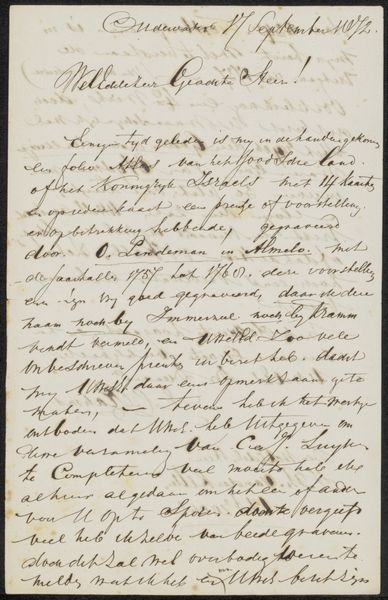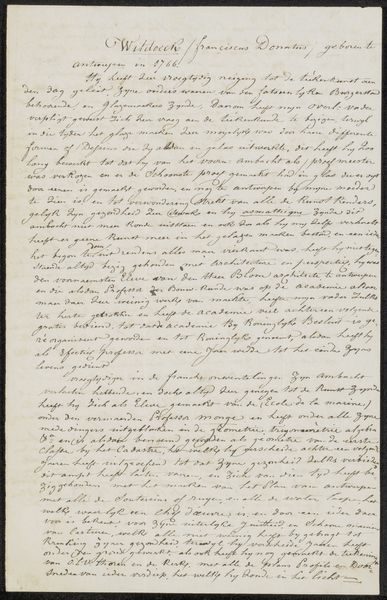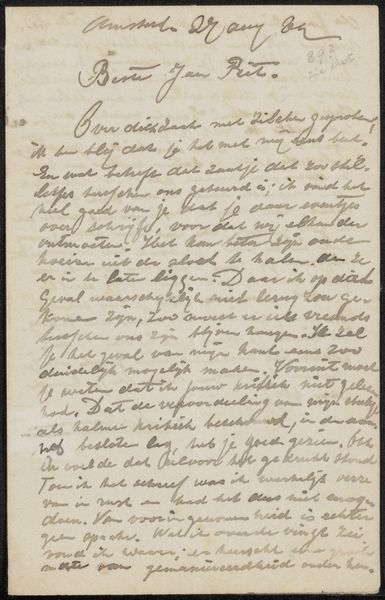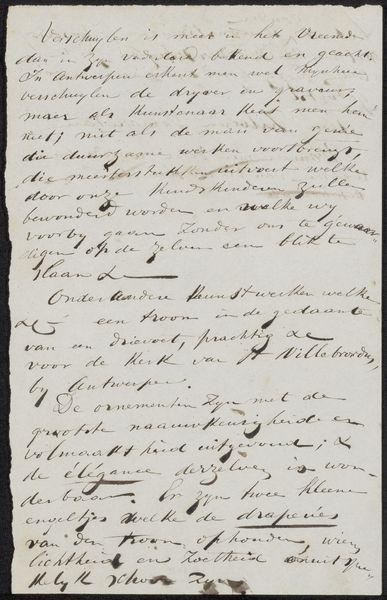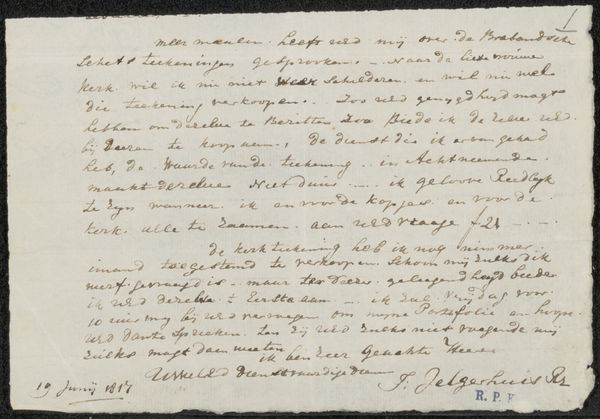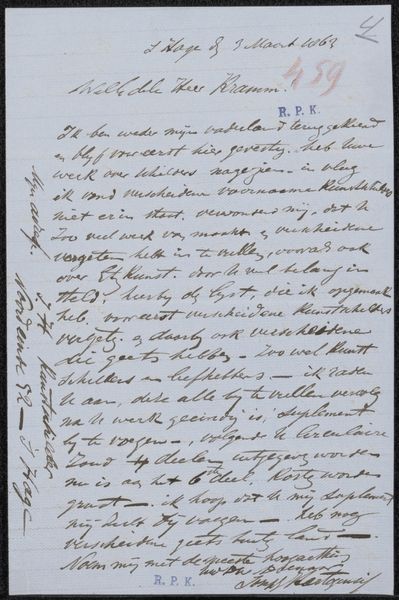
drawing, textile, paper, ink
#
drawing
#
textile
#
paper
#
ink
Copyright: Rijks Museum: Open Domain
Curator: Welcome! We're standing before "Brief aan August Allebé," likely created in 1885 by Jac van Looy. It's an ink drawing on paper and textile, a personal letter preserved for posterity. Editor: It’s intriguing—visually dense and intimate. The handwriting gives a very strong sense of a personal, perhaps urgent, communication. The overall effect is both fragile and immediate. Curator: Indeed. Van Looy, known for his paintings and drawings, composed this letter in Venice. You'll notice how the paper's lined texture and the ink's delicate variations in tone establish an almost musical rhythm to the writing itself. Editor: Absolutely, the rhythm! Knowing a little context here opens this visual experience: the artist corresponds with August Allebé, a figure pivotal in the Amsterdam art scene. So we can assume that this piece of correspondence helped both define and cement the aesthetic and ethical outlook of the art produced during this historical moment. Curator: A crucial point. This tangible object allows us to explore themes of artistic connection, mentorship, and the broader social currents of the late 19th century Dutch art world. Consider also the physicality; the fibers of the paper, the density of the ink strokes. These choices point to materiality shaping experience and thus to how we ought to process written missives versus a finished art object. Editor: I completely agree. We’re invited to engage not only with the text but the labor of artistic thought manifest through textual exchanges and letter writing, a tangible form of thought and relationship. By looking at the letter’s date and knowing a little about Allebé and his students, it opens interesting ways to assess how ideas surrounding portraiture, class, and beauty were negotiated by members of the Amsterdam Impressionism movement. Curator: That consideration—placing the letter into a narrative—underscores its status not merely as communication but as a cultural artifact reflecting an historical and artistic milieu. Editor: Seeing how such pieces of ephemera circulated offers insight into networks and relationships and reminds us how integral the support structures and dialogues were for producing art and promoting an artistic style. Thank you for pointing all this out! Curator: A pleasure! I do think we should consider more closely how that web of personal relation and the act of transcription are also crucial sites where form generates meanings. Thank you.
Comments
No comments
Be the first to comment and join the conversation on the ultimate creative platform.
